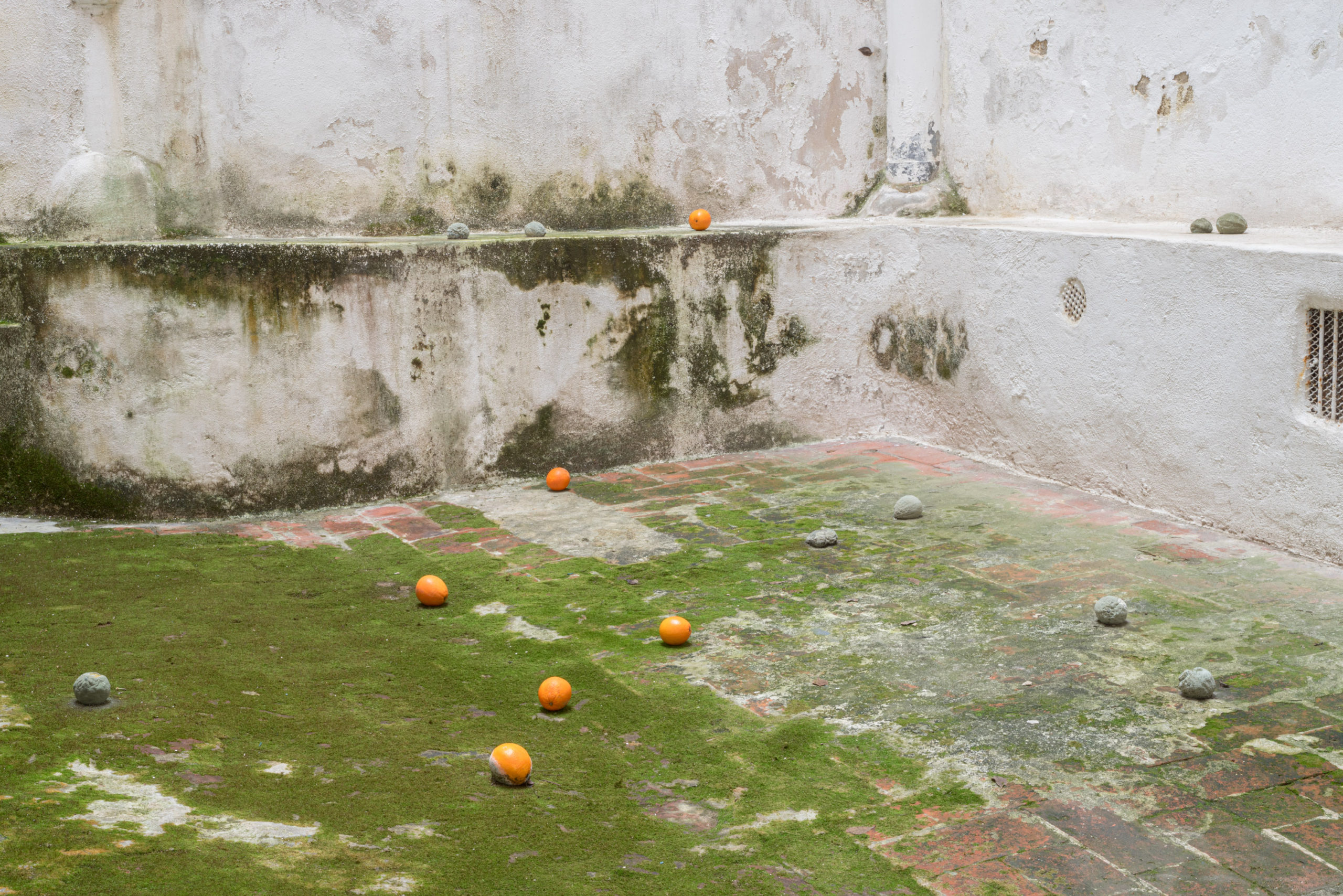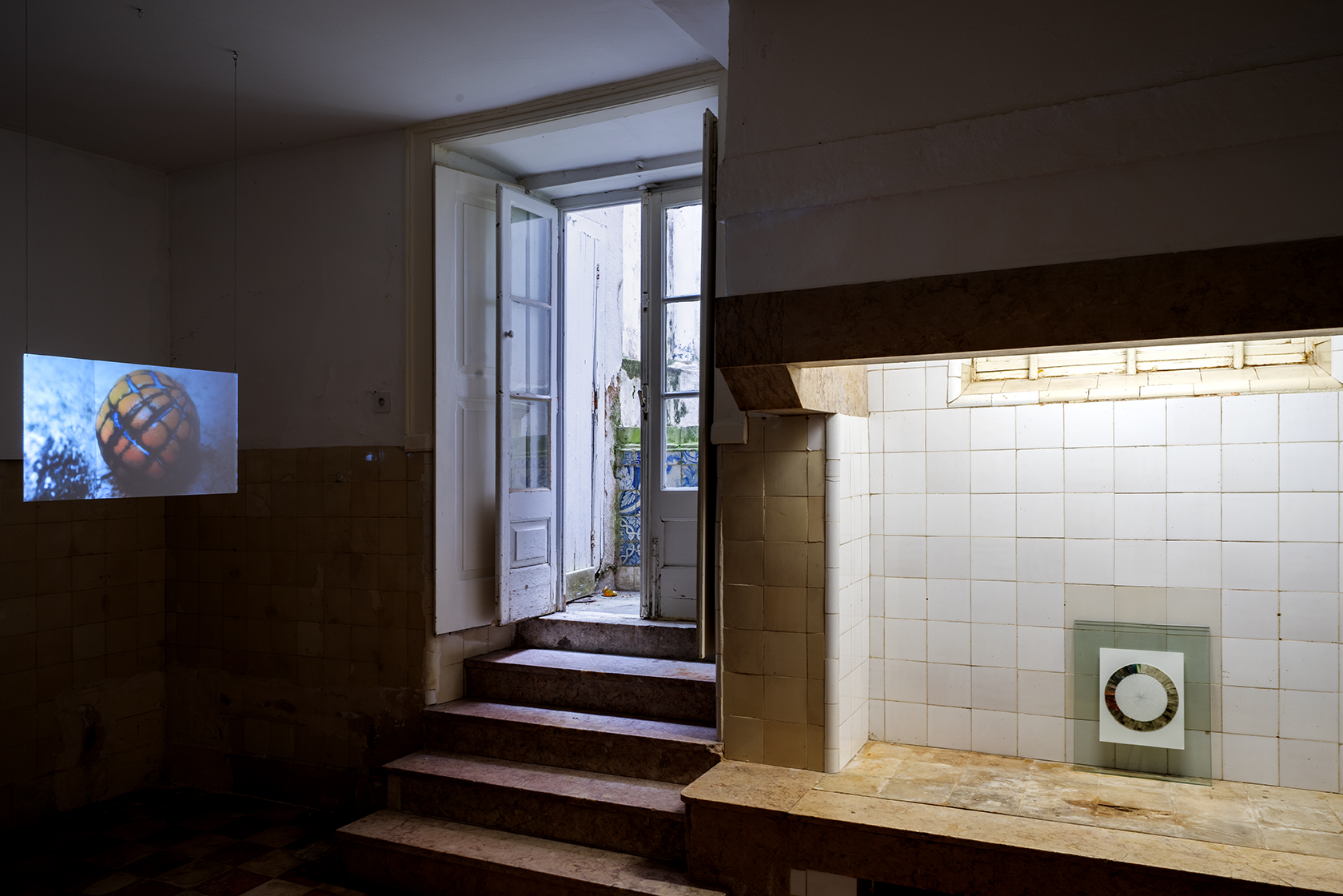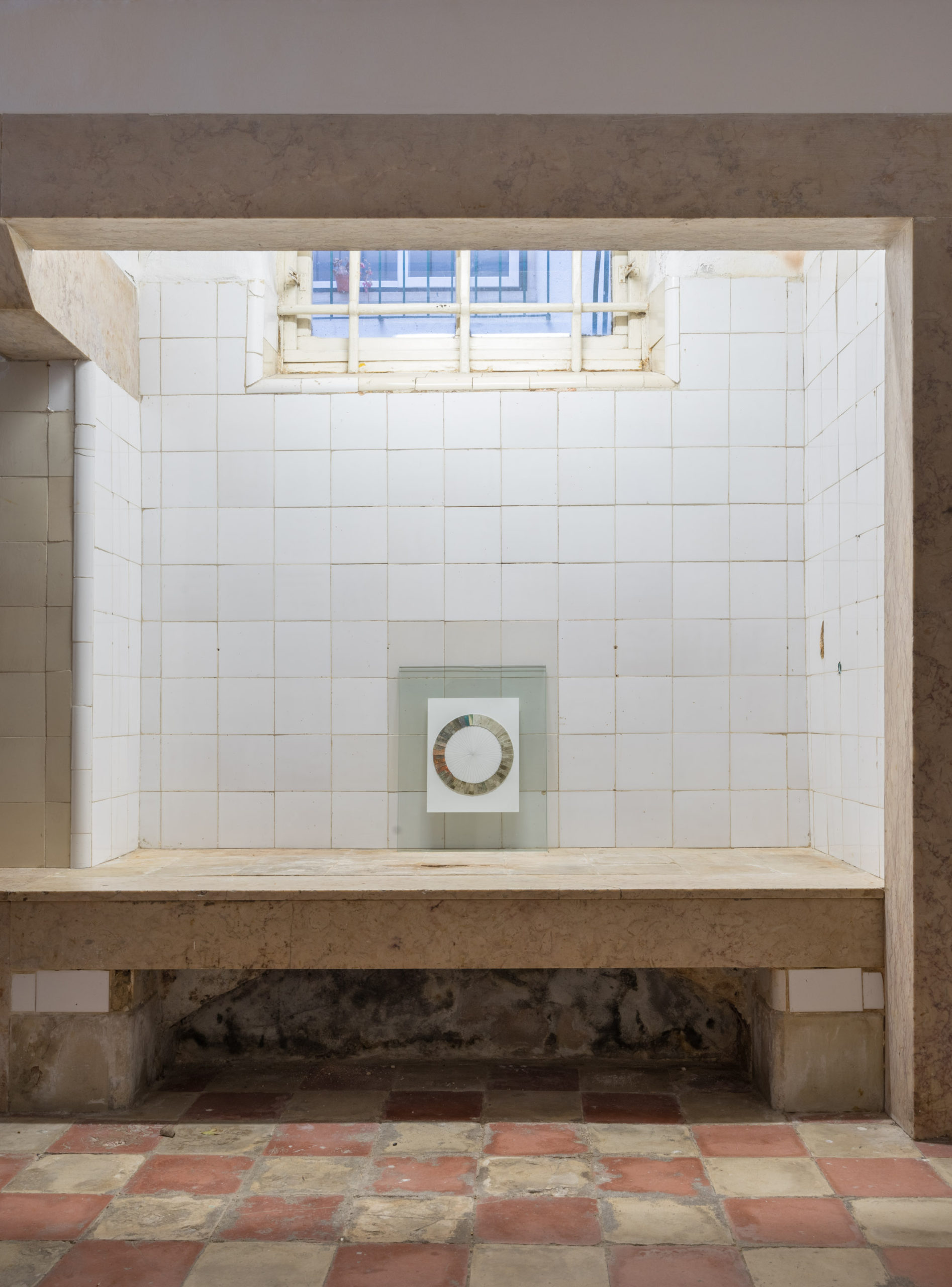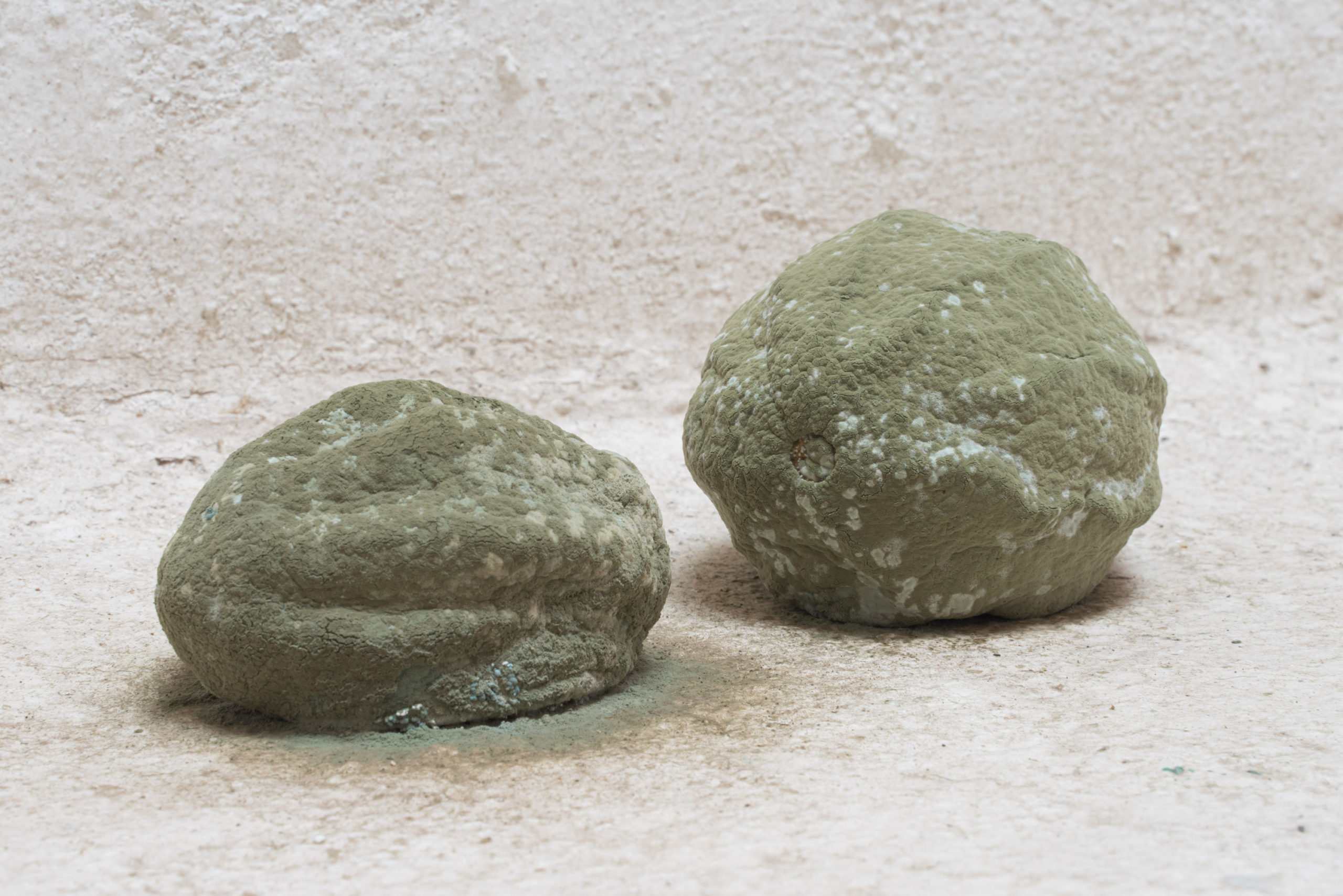
Bluranj
Bluranj
A film made out of an artist book, accordion structure 60 sheets with single gatefolds, hand glued
H.4 W.10 L.17 cm / Unfolded H.4 L. 600 cm. 2021-2022
Bluranj is an artist book composed of continuous 60 folded sheets – an assemblage of 60 images, folded and partly glued to each other. Each full page is a frame of footage I filmed in Israel between March 2020 to April 2021, composed of documentary and fiction materials, following the process in which an orange turns from orange to blue.
I spent the transformative year of the pandemic in Israel, after 22 years living in Paris and New York. There, I developed a body of work, Tristeza, named after the Tristeza Virus—a plant-based disease which has caused millions of citrus trees worldwide to die over the past 100 years. Tristeza is an ongoing project of my most recent research, including a film, an artist book and an object, outlining a conceptual inquiry that encapsulates my desire to create a blue orange tree as a way to stimulate and represent a deeper conversation on this fruit’s iconic and charged representation within Palestinian/ Israeli culture and society.
In 2017, I began my research on the popular Israeli Jaffa orange brand where I explored the duality of the orange symbol, inherent within Israel-Palestine culture and identity. In the early 19th century, the orange industry in this region was lucrative. Yet, within this economic trading, the orange quickly became affiliated and recognized as the ultimate Zionist symbol that signified working the land, as well as technological progress. As a result, Jaffa oranges became one of the quintessential symbols of the State of Israel, whilst also the emblem of the lost Arab-Palestinian land, a signification that has been erased entirely from the Israeli collective narrative.
During 2020, I expanded my research on transgenic plant engineering by following the work of researchers at the Volcani Agriculture Institute in the department for Enhanced Citrus Species. My goal was to change the DNA of the orange and reverse the color of the fruit into blue, and, possibly, creating a new species. Altering one of the most distinct symbols of this land and inventing a new strain, conceptually suggests a poetic read on the continuous conflict of identity politics in both nations.
The title of the book ‘Bluranj’ is a name I coined for the new imaginary species. It is a portmanteau of ‘blue’ and ‘orange’, with the addition of the letter “J” to mark the Sanskrit origin of the “orange” name— ‘naranj’. The fold at the core of the book’s conceptual demarche, generates a disrupted and fragmented reading. It hides as much as it reveals. It creates a new layout to record time. Browsing the book displays a 3D image that is composed out of three frames which are seen at the same time, creating a collage-like images.
Bluranj is about a color as much as it is about an orange. The fruit is a metaphor of a land and its people and the color, of a state, a condition. It unfolds the political, social and biological narratives and mirrors the “rotting, which is a privileged place of mingling, of the contamination of life by death, of begetting and of ending” (Julia Kristeva).



